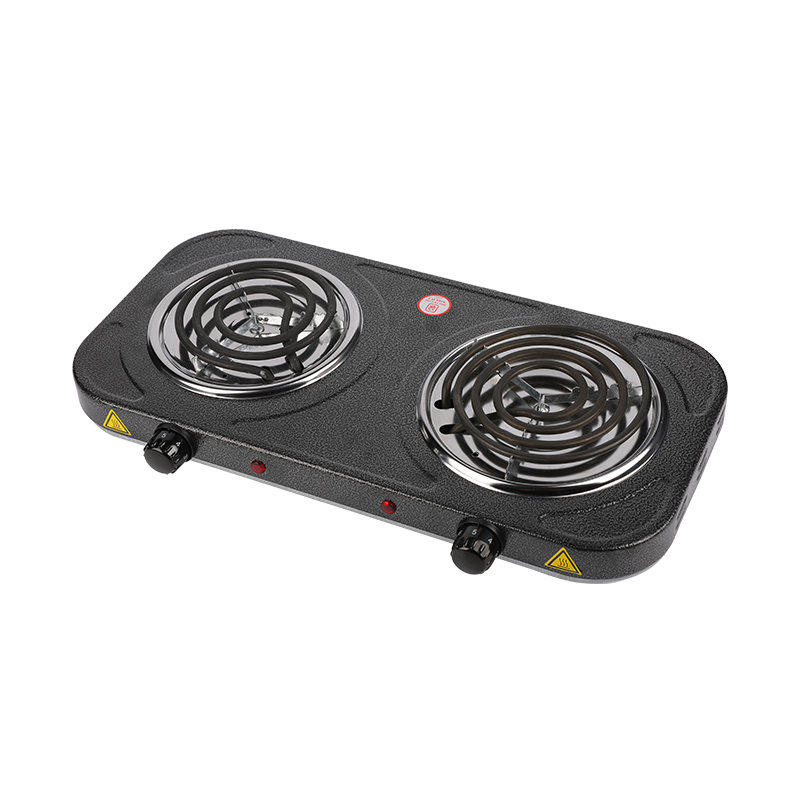Multi-functional innovative portable single hot plate
Cat:Single Hot Plate
In the realm of culinary convenience, our company proudly presents our latest innovation: the multi-functional, innovative, and portable single hot pl...
See DetailsSpiral heating hot plate units and induction cookers both serve the role of providing heating for cookware, yet their energy usage characteristics differ considerably. Understanding how each technology functions, what factors influence real-world efficiency, and how user behaviour impacts overall consumption helps determine which device aligns with your cooking style and environment.

A spiral heating hot plate employs a coiled resistive element under the plate surface; electricity heats this coil, which transfers heat through the plate into cookware. In contrast, an induction cooker creates an electromagnetic field that directly heats ferromagnetic cookware. The plate itself remains cooler, and the heat is generated within the cooking vessel itself. Because of that difference, the path of energy transfer, wasted heat, and response time vary significantly between the two.
In usage patterns where cookware is warmed gradually, where the burner is left on standby, or transitions frequently between different heat levels, a spiral heating hot plate may perform more steadily. When the workflow involves rapid toggling between high heat and lower settings, or when ambient heat needs to be minimised, an induction cooker’s direct-to-pan heating typically uses less wasted energy and produces less stray heat in the room. That said, the total energy drawn over a cooking sequence depends more on the duration, heat level, cookware contact, and surface maintenance than on the label alone.
Maintenance requirements and cookware compatibility impact the long-term energy performance of both types. Spiral hot plates tend to accept a wide variety of cookware and have fewer electronics to maintain, which can reduce downtime or inefficiencies due to system faults. On the other hand, induction cookers require suitable cookware with ferromagnetic properties; if mismatched pans are used, performance may degrade and wasted energy may increase. Both units benefit from flat-bottomed pans, proper placement, and surface cleanliness to sustain efficient heating.
If the cooking setting involves multiple styles — such as boiling, sautéing, and simmering — and the cookware set is varied, a spiral heating hot plate may provide flexible, compatible heating with fewer constraints. But if rapid heating, minimal ambient heat, and high responsiveness are prioritised — for instance, in small rooms or hot-climate kitchens — an induction cooker may better align with those goals. Users working in constrained spaces, or with existing non-ferromagnetic cookware, may find that the simpler spiral unit delivers acceptable energy use without additional adjustments.
When deciding between the two, consider your daily routines: how frequently do you switch heat levels, do you monitor ambient room temperature, do you own compatible cookware, and how often do you clean the heating surface? For example, a spiral heating hot plate used frequently without clearing residue may gradually lose its efficiency advantage over time. Conversely, an induction unit used with incompatible cookware or neglected maintenance may draw more power than anticipated.
Over-extended use, both burner types require proper cleaning and maintenance to sustain efficient performance. For the spiral heating hot plate, ensuring the coil surface and burner plate are free of build-up maintains contact efficiency. For the induction cooker, ensuring the electronic control and panel remain dust-free and the cookware used is well-matched preserves its efficiency edge. The energy usage advantage in any given scenario gradually becomes a matter of upkeep and usage behaviour rather than purely a technology type.
Neither the spiral heating hot plate nor the induction cooker can be declared categorically superior in energy usage for all cooking styles and spaces. The appropriate choice depends on your cookware, cooking habits, space constraints, and willingness to maintain the unit. By aligning the device with your routine and ensuring it is used and cared for properly, you can achieve effective performance and reasonable energy consumption regardless of technology.